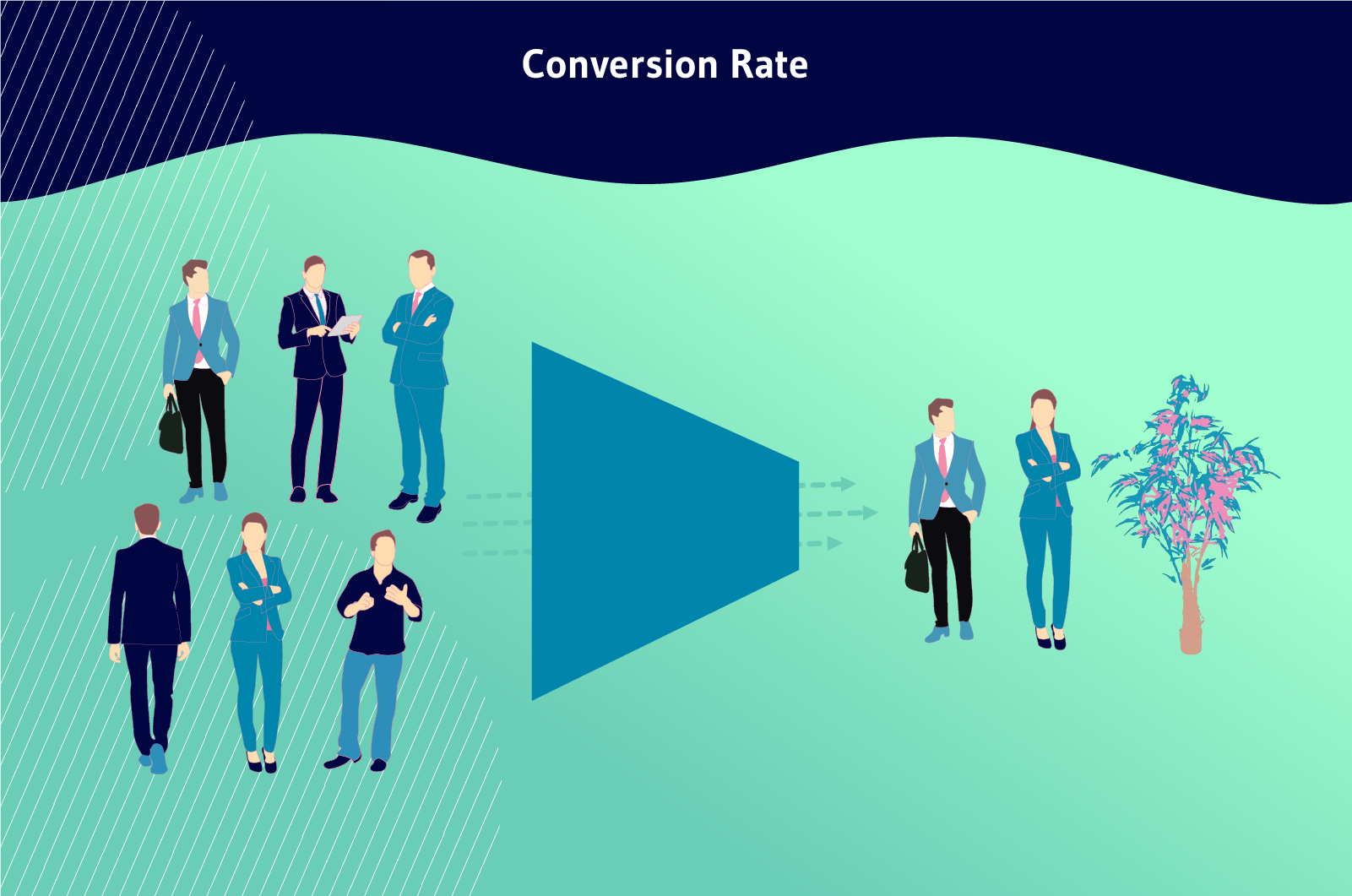The conversion rate is the percentage of people who have completed a desired action out of the total number of people who have visited the site. This rate is a key performance indicator that allows you to evaluate the level of success of a marketing campaign
Regardless of your industry, it is necessary to measure your online success based on key performance indicators
In this lot, we have one of the most important KPIs, namely the conversion rate. The latter allows a company to calculate the number of people it was able to get to perform a specific action on the website.
So,
- What is a conversion rate?
- What are the elements that affect the conversion rate?
- Why should you optimize it?
- What are the best ways to optimize the conversion rate?
To help you understand the concept of conversion rate, we will develop in this article the answer to these questions.
Chapter 1: What does Conversion rate mean?
Let’s review in this chapter the meaning of the KPI conversion rate in its entirety.
1.1. Definition of conversion rate
When we talk about conversion, we can refer to any important action that you want the visitor to perform on your website
In reality, some popular actions like ”buy” are the most specific and valuable for most sites.

However, for some other websites, the most specific action they will want the visitor to perform may not be of immediate interest to them.
A conversion can result in the following actions:
- Purchase from your site;
- Filling out a contact or prospecting form;
- Making a call;
- Entering an online chat conversation;
- Entering a subscription;
- Register as a user;
- Upload a file;
- Use your online tool;
- Renewing a package or a current subscription;
- And so on.
From this, we can deduce that your conversion rate is the percentage of completion of the desired action compared to the total number of possible conversions in a given calculation period.
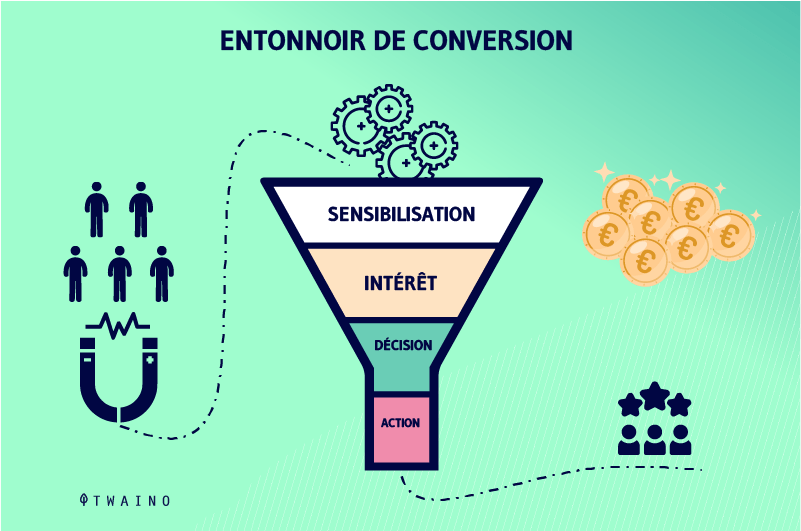
You’ve probably heard of microconversions and macroconversions.
Macro conversions refer to the transformation of a visitor into a paying customer or a subscriber to a web service, for example:
- A subscription to an online magazine
- A streaming service or a monthly software-as-a-service (SaaS) subscription;
- Etc.
On the other hand, microconversions are considered smaller secondary actions that a visitor performs on a website that indicate that they will make a conversion. Examples include:
- Clicking on the site
- Watching a promotional video;
- Adding an item to the cart;
- Etc.
1.2) How can conversion rates help you?
Conversion rates are a great tool to measure and compare the ability of your different traffic channels.
For example, when you use SEO and social media to attract leads, calculating the conversion rate gives you an idea of which channel is making you the most money and on which you need to put more effort.
Conversion rates are even more important when it comes to acquiring mobile traffic, as they provide a better way to measure the success of each campaign
They can also be used to set ROI expectations when implementing a campaign.
Furthermore, conversion rates do not always have to refer to clicks, but they can refer to conversion events located at the last stages in the funnel
For example, it is possible to calculate the percentage of users who installed an application or performed an action in the application
This is important for marketers, as it can help them identify leads that can potentially become customers
This information can then be fed back into the funnel to help target and optimize your campaign performance.
When used correctly, conversion rate analysis can reveal the most effective channels for promoting a particular product.
This helps web marketers better guide their strategic campaign decisions
If your data shows that a conversion rate is lower than expected, it can also be used to detect user experience issues and highlight areas for improvement.
1.3. What is the formula for calculating the conversion rate?
You can measure a conversion rate by dividing the number of people who actually convert by the overall number of visitors to the page.
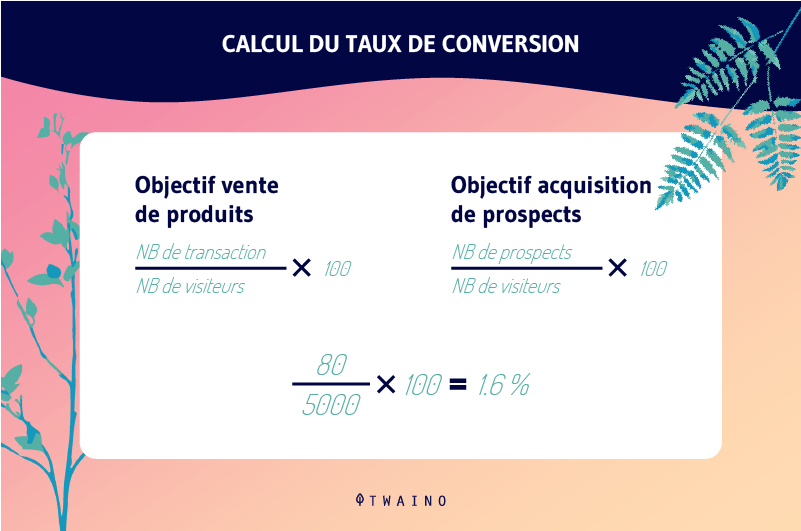
For example, if you have an online store that sells clothes and 100 people visit your store in a month and 10 people make a purchase, here is how you can calculate your conversion rate:
Conversion rate = (10/100)*100
Conversion rate = 10%
Now let’s review the different types of conversion rates you can use to examine your performance:
- Overall Conversion Rate: This conversion rate covers all of your site traffic and is a measure of your marketing success. Overall, this rate is calculated from the number of website visitors who sign up for a paying interest for the company;
- Conversion rate per channel: When your company applies marketing strategies across multiple communication channels to attract traffic, then you need to calculate a conversion rate per channel. The conversion rate per channel provides a channel-by-channel breakdown of your conversion. This will help you identify differences in performance based on the traffic source. For example, if you see more conversions from Google SEM or Facebook Ads ;
- Page conversion rate: As implied, the conversion rate per page involves examining the ability of each page to attract visitors. This rate helps identify your top converting landing page so you can use this data to reallocate traffic to your top converting pages;
- Ad or Campaign Conversion Rate: When running digital ads, you will follow a different protocol depending on whether your prospects are in consideration, or conversion. If an ad or campaign has a significantly higher conversion rate, you may want to consider increasing traffic to it;
- Keyword Conversion Rates: Some keywords work better than others, it’s a simple fact. Looking at keyword conversion rates can help you identify keywords that have less volume, but a higher conversion rate. In this case, it may be worth reallocating your budget to these traffic sources.
1.4. How to assess a conversion rate?
We just learned how to calculate the conversion rate of a site or a page, but you probably don’t know what is the right one for your website.
In general, the average conversion rate varies between 2% and 5%. However, we can also talk about bounce rate based on different elements:
1.4.1. Conversion rate by industry
Speaking of industry, we will see what a good conversion rate is for an e-commerce website.
Here is a small breakdown for a complete understanding of conversion rates in different industries:
| Low | Medium | High | |
| E-commerce | 1,84 % | 3,71 % | 6,25 % |
| Justice | 1,07 % | 4,12% | 6,46 % |
| B2B | 2,23% | 4,31% | 11,70 % |
| Finance | 5,01 % | 11,19 % | 24,48% |
As can be seen in the table, e-commerce conversion rates are very low, especially compared to finance. We can also note that the conversion rates for B2B sites are also higher.
When we look at the legal side, if your rate is around 4%, you’re average, but if you’re around 6.5%, you’re at the top level, and when you’re dragging a rate of around 1%, then you still have work to do.
But, we should mention that an e-commerce store with a 3.71% rate could make more money than a company that offers legal services and enjoys a 6.46% conversion rate.
This is because legal is a niche that doesn’t attract many buyers. E-commerce, on the other hand, can attract more users.
1.4.2. Conversion rates for retail ads
According to an ADI report, the average conversion rate here is 3%. However, some industries may enjoy a higher or lower conversion rate depending on competition and demand
Here’s a breakdown:
| Industry | Conversion Rate |
| Consumer Electronics | 1,4 % |
| DIY and Tools | 1,7 % |
| Automotive | 2,2 % |
| Furniture and Decoration | 2,3 % |
| Major Chains | 2,3 % |
| Jewelry and Cosmetics | 2,9 % |
| Sports | 3,1 % |
| Other | 3,4 % |
| Clothing and shoes | 4,2 % |
| Health and Pharmaceuticals | 4,6 % |
| Gifts | 4,9 % |
This shows how conversion rates can differ for e-commerce. A store that sells gift items may have a higher conversion rate than a store that offers sporting goods.
A large e-commerce store that offers multiple products may have different rates for different sections.
1.4.3. Conversion Rate by Traffic Source
According to this Episerver research, there is a considerable difference in conversion rates when it comes to calculating them based on the source.
This is why it is necessary to understand and practice the main calculation formula.
When you base your conversion rates on the source of the traffic, you will notice that some will be higher and others lower than the average.
This is simply because not all channels can have the same acquisition performance.
And by the way, it can also depend on what you offer to your audience, some channels will be more conducive than others.
| Traffic origin | Conversion rate |
| Search results | 0,7 % |
| Social | 2,1 % |
| Direct | 2,2 % |
| 2,3 % | |
| Reference | 2,6 % |
| Recommendation | 2,8 % |
| Paid advertising | 2,9 % |
As we can see, paid traffic tends to convert better. That’s why a lot of companies are buying ad space.
1.4.4. Conversion rate by device
We know that a lot of people use mobile devices to browse the web, so it’s important to know how the rate changes from device to device.
Here’s a quick breakdown:
| Device | Conversion rate |
| Mobile | 1,82 % |
| Tablet | 3,49 % |
| Desktop | 3,90 % |
This may be a bit surprising, but mobile users do not convert as well as desktop users. As a result, we can note a slightly higher conversion rate from mobile sites than the conversion rate calculated from a site tailored to other devices only.
1.5. What is the difference between the conversion rate and the click rate?
There is often a tendency to confuse the click-through rate with the conversion rate. Sometimes, some people consider a click as an element to take into account when calculating the conversion rate of a site or a page.
1.5.1. Click through rate (CTR) means the percentage of people clicking on your Google listing
When you have a website indexable by search engine robots, you are already eligible to receive clicks.
The more you optimize your website to rank high in the search results, the more clicks you are likely to get.
However, your website’s click-through rate is the number of people per hundred who clicked on your website, usually in the SERPs.
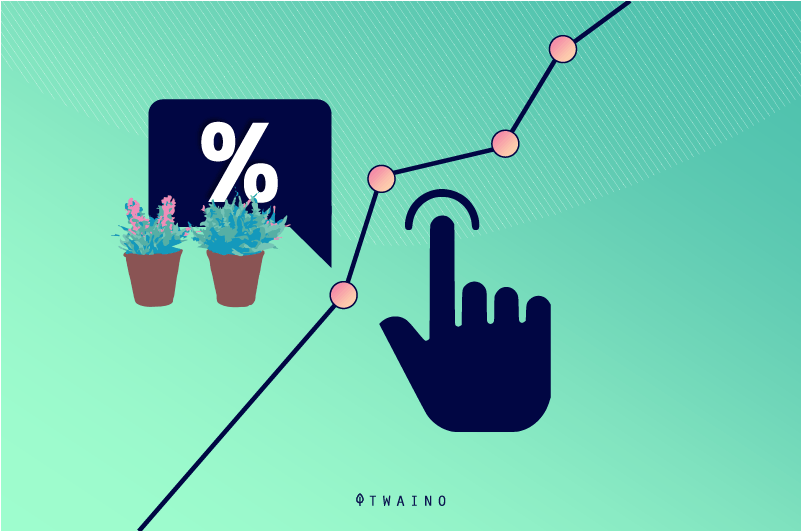
Assuming that your website appeared in the search results for 100 people and 5 people click on your web page, then your click-through rate in this case is 5%.
In other words, the click-through rate is the probability that someone will click on your content address
There are several things that can account for a high click-through rate, such as:
- Your ranking;
- Headlines;
- Descriptions.
1.5.2. Conversion rate means the percentage of visitors who buy online
As already mentioned above, the conversion rate means a purchase made by a visitor on your site
You can influence online conversion rates with sales strategies like:
- More attractive copywriting
- Product photos
- Coupons or offers;
- And so on.
Similarly, you can also influence conversion rates through better web design:
- Clearer calls to action
- Instant or fast online payments;
- Etc.
1.5.3. Conversion rate vs. click-through rate
The main difference is that click-through rates are for people before they arrive on your site. On the other hand, conversion rates target people who have already landed on your site.
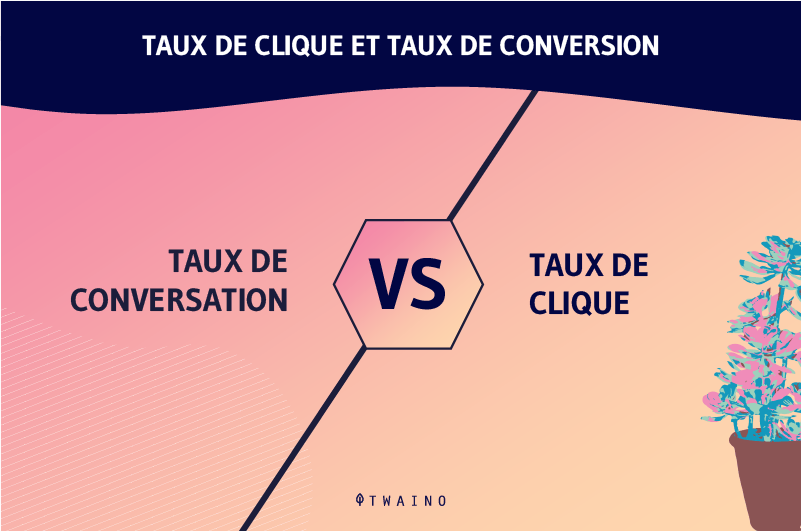
This would mean that if you want to improve your click-through rate, you have to apply completely different means than if you are going to increase your conversion rate.
For example, when you update the content of a page on your site to make it richer and more captivating with a strong title and meta description, it will entice people to click on it. As a result, your click-through rate will improve.
However, a high click-through rate can imply a probably high conversion rate.
Chapter 2: What are the main factors of the conversion rate?
When you notice that your website is not reaching its goals, here are the most important indicators you should pay attention to:
2.1. The total number of conversions
Speaking of conversion rate indicators, the overall number of conversions is your most basic conversion KPI
This metric is even more useful when you’re only tracking one or two channel types. In this case, tracking this number alone will tell you a lot about your performance.
Knowing the exact number of conversions in a week or month gives you a clear picture of the fruits of your marketing activities over that period
It allows you to note which of the elements, such as the paid advertising or the new landing page design, brought you more conversions.
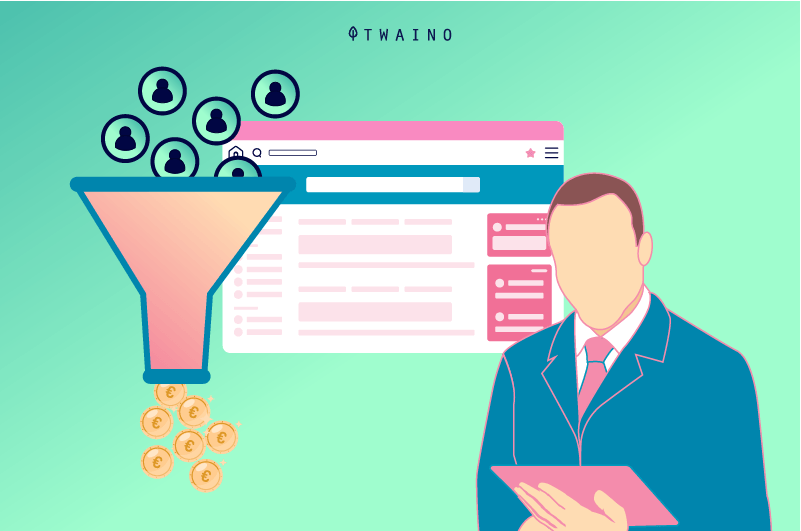
On the other hand, it makes sense to track the number of conversions by type if you’re collecting multiple types:
- Quote Requests
- Demonstrations;
- Event registrations;
- Newsletter subscriptions.
Tracking conversions by type helps you see which areas of your marketing need more attention.
2.2. Traffic Sources
Sometimes traffic growth isn’t as important as many people think when it comes to measuring conversion rates
The most important thing here is not how many people visit you, but how those visitors help you achieve your goals.
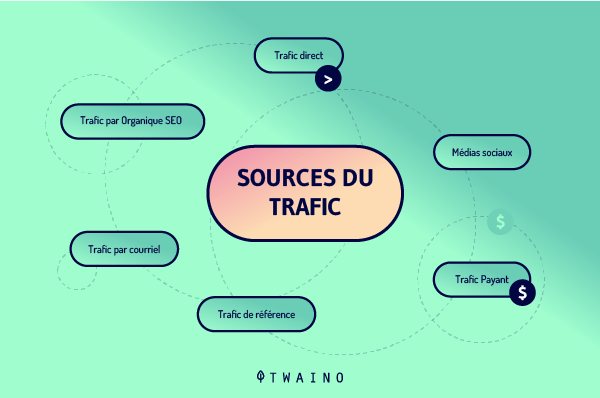
Recording every interception point between your website and each of your visitors is an essential thing for the conversion rate
We can distinguish:
- Direct visitors: These are the people who come to the site by typing your URL directly into a browser. They are probably your former customers, or they are referred to you;
- Organic visitors: These are visitors who find you through a search engine, usually Google;
- Referring visitors: These visitors click on a link to your site from another website.
2.3. new visitor conversion rate
The interaction of a brand new visitor on your website will certainly not be the same as that of an old one.
To improve new visitor conversions, you need to isolate this metric from the conversion rate metrics of your loyal or repeat customers
That way, you can note what interests them when they first visit the site and put in place ways to improve that experience.
As the numbers say, you only have a few seconds to grab a visitor’s attention, so you need to carefully examine your first impression and compare it to your competitors’
This will help you understand the message you are sending to the audience so you can make it more impactful. Think about what matters to you when you land on a new site.
You will probably expect factors such as:
- Usability: The ease of navigating the website
- Clarity: Easily understanding what the site is about
- And value: Easily finding the information you are looking for.
These elements will quickly convert new visitors into loyal brand customers.
2.4. Conversion rate for repeat visitors
When looking at the conversion rate of people who are not loyal, but come back, you need to ask yourself two questions:
- Why did the person return?
- Did the person convert the first time?
If the person did not convert for the very first time, knowing this data will allow you to convert them now.
You should also note that if someone did not convert on their first visit, but comes back, it would mean that you have made enough of an impression
This means that the conversion process on the next visit will be much easier than on the first visit to your site.
You will need to isolate the conversion rate of return visitors and figure out how to increase it.
2.5. Cost Per Acquisition (CPA)
Another important conversion KPI to know is CPA or cost per acquisition
In this context, CPA basically means cost in money related to a conversion. In other words, how much you paid for a conversion
The conversion CPA is calculated by dividing the associated marketing costs by the number of conversions
CPA = Associated marketing costs / The total number of conversions
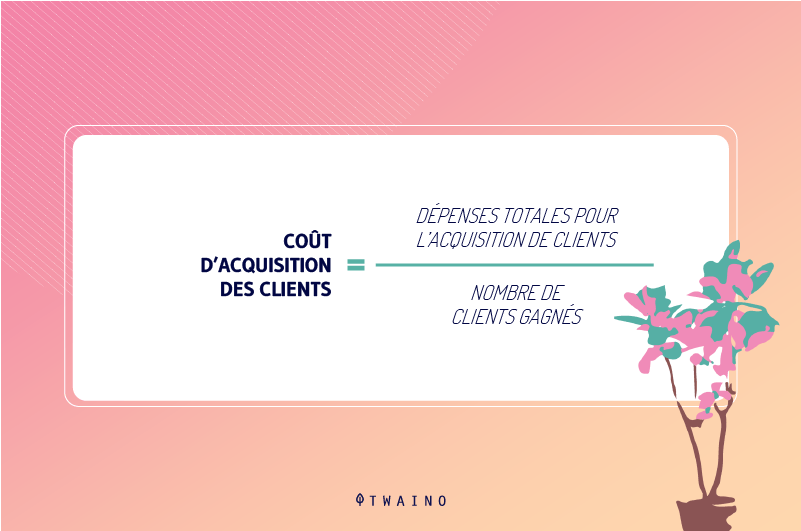
In many cases, people only include directly attributable costs, such as ad spend for a specific campaign. But for accuracy and clarity, it’s best to add all associated costs into the formula.
2.6. Conversion Value
After knowing the cost of a conversion, the next natural step is to determine the value of a conversion
As a KPI, the conversion value helps you estimate the return on investment of CRO activities and marketing in general.
Conversion value is always based on estimates, except when the conversion is a purchase where the conversion value can be considered equal to the purchase value
In other cases, you’ll have to rely on your knowledge and data on funnel metrics
Specifically, you are interested in the likelihood of the conversion turning into a transaction and the value of that transaction
As metrics, this can be your prospecting rate and average transaction value.
Often, a transaction does not cover the full value potential of a conversion. Therefore, it may be necessary to link the conversion value to customer lifetime value or other long-term value measures.
2.7. Bounce Rate
Bounce rate is the rate at which new visitors visit your site and immediately click away.
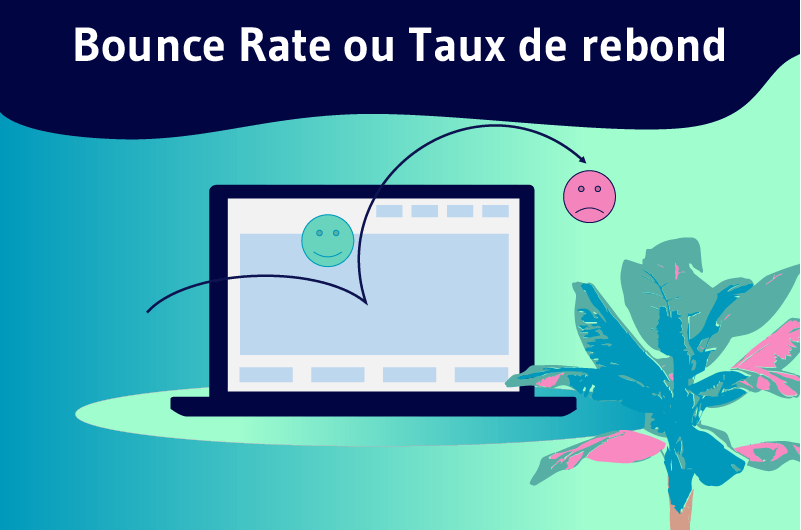
Since they don’t interact, it’s a sign that they’re not going to convert.
A high bounce rate can be explained by several things namely:
- Weak or irrelevant traffic sources
- Or landing pages that lack serious optimization
Common problems include poor design, poor usability or high load times.
Another problem could be the kind of page on your site that people land on. For example, research shows that product detail pages perform worse than other types of landing pages
If this is an issue on your site, direct visitors to other pages instead.
If you’re in e-commerce, bounce rates are often equated with abandonment rates, which is the rate at which people abandon their shopping carts without buying.
There are many more factors involved when a purchase is involved, but it’s usually the result of a complicated checkout process or unexpected costs.
2.8. Exit pages
It’s also important to identify the pages on your website that drive people away
In many cases, your final call to action or conversion may be on page two or three of a process
For example, the desired action may be for the user to browse your products to put some in the cart and then submit their payment information.
If people leave before taking the final step, you are losing potential customers.
To solve this problem, analyze these pages and determine at what stage of the process your visitors leave or abandon their shopping cart.
There are many reasons, of course, but by optimizing your exit pages, you’ll start to see your conversion rate metrics increase.
Chapter 3: What are the reasons to optimize your conversion rate?
The conversion rate optimization process involves using various tools and techniques to determine how much to make changes to your website to make it more compelling.
The idea here would be to somehow increase the conversion rate of your company’s website.
For example, if you have a 10% conversion rate on your website, that means that 10% of your website traffic is actually doing the main thing you wanted them to do, such as purchasing a product or signing up for your email list.
Conversion rate optimization is really focused on 2 factors:
- Enriching your product or service offering;
- Reduce friction in your sales.
With that, here are the benefits it can bring you:
3.1. better understand your users
Online shopping cart abandonment is one of the biggest obstacles for today’s e-commerce retailers, with abandonment rates averaging 69.8% in 2020
Complicated payments, security issues and other factors can involve and increase abandonment rates
But conversion rate optimization helps businesses understand their website visitors.
In general, optimization aims to improve the percentage of users who complete any desired action on a web page, such as filling out a form, making a purchase or entering their email address
By taking a holistic approach to conversion rate optimization, you’ll gain deeper insight into everything that happens before a user converts, such as:
- What drives people to your website;
- Why and where users abandon the site or the conversion process;
- What persuades visitors to act.
This user information will help create a website design that greatly improves the overall customer experience.
3.2. Increase traffic to your e-commerce store
Properly optimizing the conversion rate means significantly reducing the cost of acquiring a customer. This way, you can start by getting customers for free without increasing your advertising budget.
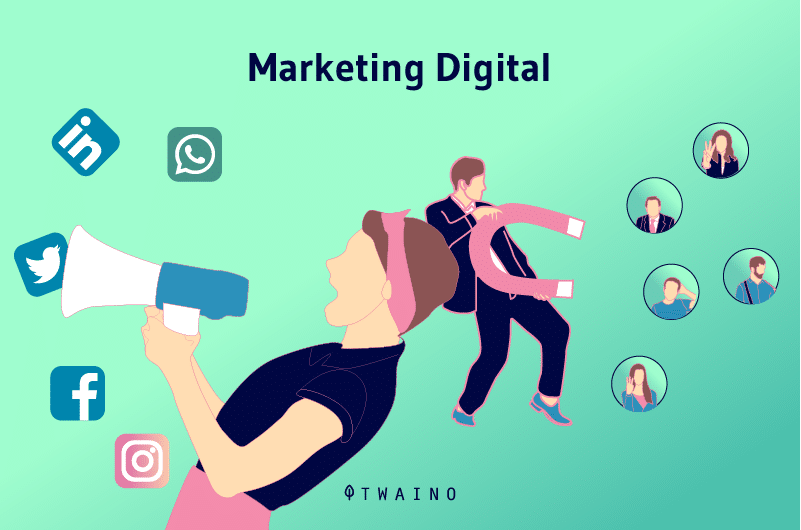
Conversion rate optimization practices help to:
- Refine your website and funnels to make them easier to use for your visitors ;
- Incentivize people so they take the actions you want them to take in order to increase conversions.
3.3. Increase profits
Ultimately, every business is looking for higher conversion rates in order to increase profits.

Companies that invest in conversion rate optimization can increase profits without ever increasing total costs
While these practices require some upfront expenses, these costs are quickly offset by increased profits.
Here’s a quick reminder of how to calculate profit:
Profit = Revenue – Cost
Revenue can be calculated using the following equation:
Revenue = Visitors x Conversion Rate x Average Order
Using this equation, even a 2% increase in conversion rate can significantly increase a company’s profit
This increase attracts new customers and boosts sales, but does not require cost cutting or funding.
If a website has 1,000 organic visitors, a 5% conversion rate and an average order of $100, the monthly revenue would total $5,000
By increasing that conversion rate by just 1%, monthly revenue would increase by $10,000 per month.
3.4. Reduce pay-per-click costs
It’s probably no longer a secret that Google Adwords pay-per-click pricing has seriously increased.
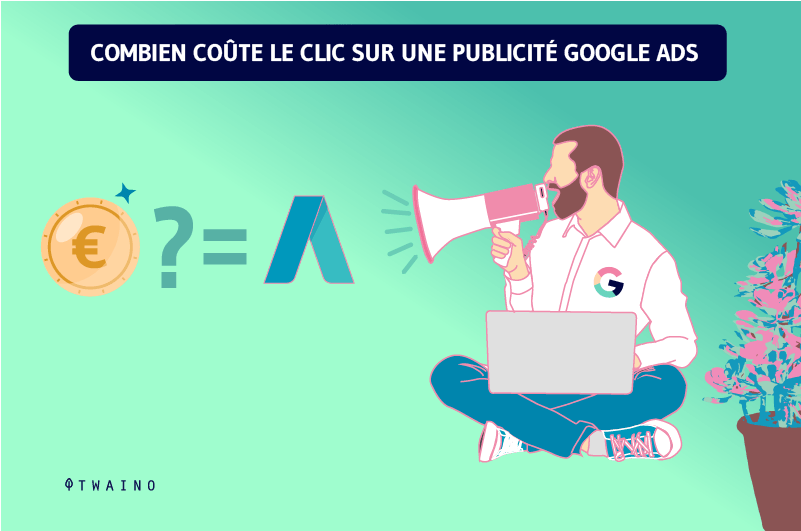
The simple reason is that the demand on the platform keeps increasing day by day. And more demand naturally begets higher prices.
Pay-per-click used to be the best way for new or small businesses to get attention, but it’s becoming less and less of an option, especially if not all clicks convert into sales.
As a ripple effect, online retailers are noticing that their PPC ad spending budgets are increasing while conversions within their e-commerce store are decreasing.
Optimizing your conversion rate means you can generate more sales than you can possibly generate, so that clicks pay off.
3.5. Competitive advantage
Optimizing your conversion rate against your own benchmarks is a better option. This shows that you are constantly going out of your way to improve your business’ declines
Conversion rate optimization, however, can also give you a slight advantage over your competitors
The theory is that you don’t need to be 100% better than the competition to get 100% more sales. You just need to have a slight advantage.
Conversion optimization is like finding a magic recipe. You can invest the same budget you used to budget and get more return
It’s a process that constantly requires adjustments and commitment, but it’s always possible to improve and create more conversions from your existing traffic.
3.6. Shorten consumer attention spans
Numerous psychological studies have proven that from generation to generation, consumer attention spans get shorter and shorter.
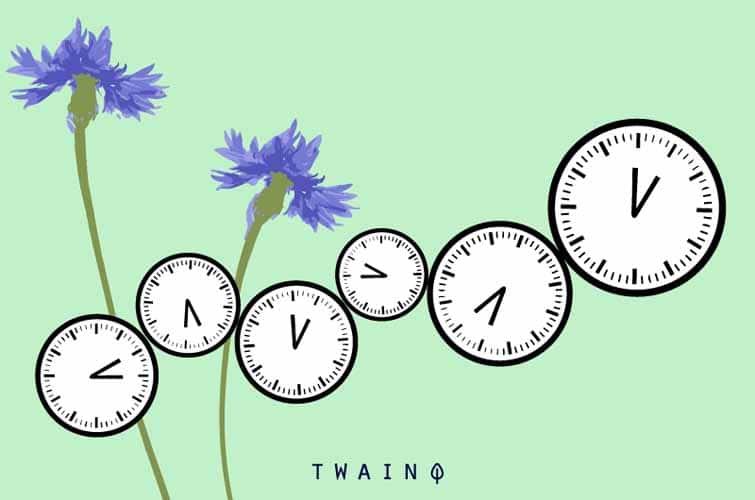
This means that if the average user can’t find what they need quickly, they are less likely to stay on the site for a few more seconds
Instead, they look for a website that will more easily provide what they want, even if it’s at a higher price.
Conversion rate optimization, however, allows online store owners to increase the chances of keeping buyers’ attention.
3.7. Legitimizes and streamlines your business
A continuously optimized online store looks more legitimate than a business that is not. It creates a clear path from landing page to purchase.
For an online business, this usually looks like an inventory with clear categories that can be easily browsed, so individuals can find exactly what they want
It also means making the online shopping cart visible and easy to access so that making a final purchase is as simple as clicking a single button.
It also means displaying answers to any type of question buyers might have about your product or ordering process such as:
- Shipping costs,
- Return policy.
3.8. Reduce bounce rate
When conversion rates improve, more site visitors progress through the conversion funnels and fewer bounce off the site
Whether bounce rates affect search engine rankings is a controversial issue, with some SEO experts confirming it and others disputing it
Nevertheless, the goal is to keep visitors on the website for a long time and make them discover other things than what brought them there.
Thus, reducing the bounce rate has an interest for the company and can also have a secondary effect on the optimization of the site.
In any case, practices that reduce the bounce rate of the site benefit the company in one way or another
- Improve readability: Conversion rate practices include using bullets, shorter paragraphs and headers to make landing pages easier to read;
- Avoid popups: Popups can be annoying and it frustrates most site visitors. It is essential to use them in the right way to keep people on the site for a long time;
- Optimize load time: 47% of users expect a web page to load in two seconds, so the faster it loads, the more likely they are to stay;
- Place a very specific call-to-action button: A good, clear call-to-action is less likely to confuse your visitors and will help clarify the user’s intent.
In addition to reducing bounce rate, these practices help you drive traffic to more landing pages
To do this, it’s important to use attractive CTAs that encourage your visitors to click through to another page on your site, whether it’s the shopping cart or a landing page for a free download.
Chapter 4: How can you really optimize your conversion rate?
In the end, we’ll get to the bottom of the tips for optimizing your conversion rate.
4.1. run A/B tests
A/B testing or split testing refers to a strategy of identifying which elements of a site have the greatest potential to increase your conversion rate
For example, if you have two different offers for your product or service and you don’t know which one to use, you can run an A/B test to see which one gives more benefit than the other.
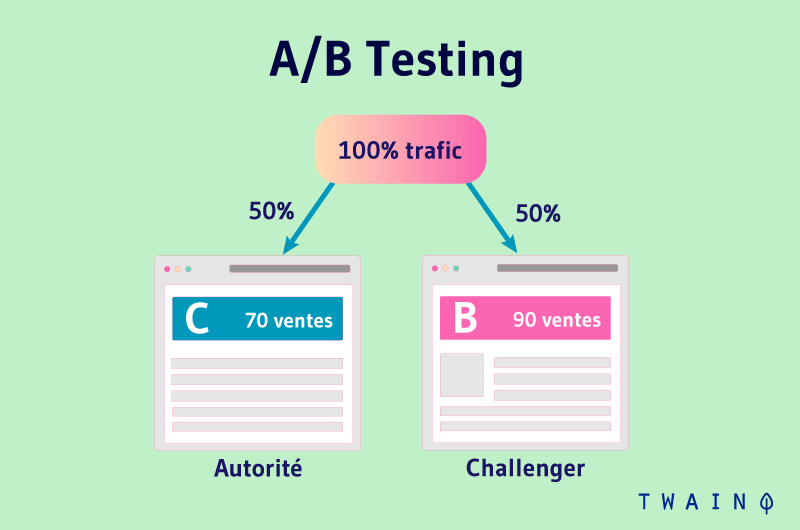
Create two versions of your page, design A and design B, with different calls to action or messages
Then use Google Optimize or another A/B testing tool of your choice, such as HubSpot and the Kissmetrics A/B testing kit
These tools will send some of your traffic to page A and some to page B, then measure the difference in performance. The best performing page is the one to consider leveraging to increase your conversion rate.
4.2. create a compelling and clear value proposition
Reasonably, the value proposition is a very influential factor in the conversion rate, it is its ability to approximate the conversion potential
It is also the reason why the visitor should buy elsewhere than from you.
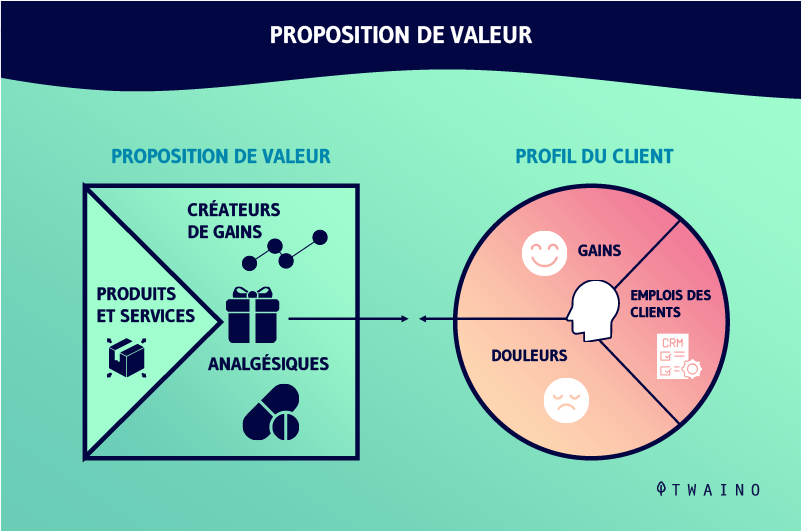
Customers not only want to know what the product can do for them, but also why they should buy from you.
Many marketers try to improve results by changing page elements such as:
- Font sizes as well as colors
- Button shapes
- Images
- Incentives
- Etc.
But they practically ignore that the first step should really focus on strengthening their value propositions.
You need to refine your value proposition until you can articulate it in one immediately believable sentence.
As hard as you work to articulate your value proposition, to know its true effectiveness, you must test to see how it resonates with your ideal prospect
4.3. Build a sales funnel
Sometimes it’s asking for the sale or a signup very quickly that prevents conversions for most websites.
Some people may simply be browsing your site without being psychologically ready or in a hurry to buy at the moment.
The more expensive or complicated the product, the more time people need before they are ready to commit
For example, for software products, sometimes offering a demo or free trial instead of asking for a signup or purchase can bring a significant improvement in site conversions
But in many cases, you simply need to slow down and create a sales funnel to build trust, develop relationships and prove your expertise.
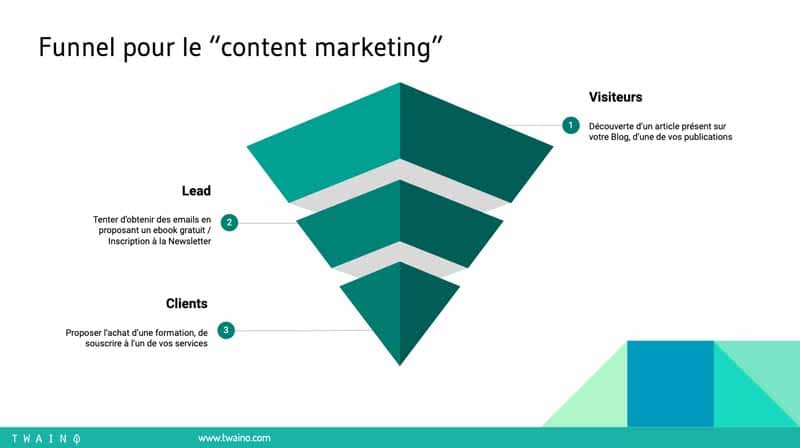
It will be about providing value to visitors before offering them your products or services.
A better way to do this these days is to simply capture their email address so you can continue to talk to them and bring them closer to the point of purchase.
4.4. Use call to actions
Your call to action is also one of the most important elements of conversion rate optimization
It’s your main focal point that tells the site visitor why they should do exactly what you want them to do

The call to action should contain both value and urgency
Here are some different types of calls to action you can use on your website or landing pages:
- Lead Generation: Ask your site visitor to schedule an appointment or request a call back ;
- Form submissions: A well-constructed form can help gather the information you’re looking for ;
- More buttons: Sometimes you just need to get them interested in learning more. Create a CTA that allows them to dig deeper with more detailed information;
- Product demo or free trial: We’re in a trial-before-you-buy world. If possible, provide a free product demo or trial offer;
- Social Sharing Buttons : Allow site visitors to easily share your address or landing pages with their audiences on social networks.
While your site or landing page may have more than one CTA, it’s important to clearly identify your main call to action so the visitor isn’t confused about what to do.
4.5. Take advantage of social proof
Social proof is the concept that prospects are more likely to make a purchase from you if you’ve been recommended by a contact, previous customer or trusted third party.
Or it could be the case where they have been exposed to your content on social networks and built some trust based on what you share
Speaking of social proof, here are some examples:
- Reviews and testimonials: They are shared to provide a reassuring and direct answer to the most pressing question of visitors ;
- Number of customers: This is a powerful reference for potential customers to see how many people trust your products or services;
- Industry Endorsements: Endorsements from key figures and thought leaders can earn you credibility points;
- Seals of Trust: These can be Better Business Bureau accreditation seals, SSL secure site icons, merchant account verification symbols or other types of credibility markers that vary by industry. Especially for products and services for which you require the submission of personal data, you need to reassure visitors that they can trust you to handle their information with care.
The presence of social proof can make your business instantly more trustworthy, as claims about how your product provides a positive experience come from unbiased sources.
In Summary
Conversion rate is an important KPI that measures a site’s performance, or its ability to turn visitors into loyal customers.
This indicator helps you to assess your successes as well as your weaknesses in order to base your next marketing campaigns on other strategic means.
In this article, we have detailed several points on the concept of conversion rate without skipping the best ways to optimize it.
If you have other important resources on conversion rate optimization, we invite you to share them with us in comments.
See you soon!

